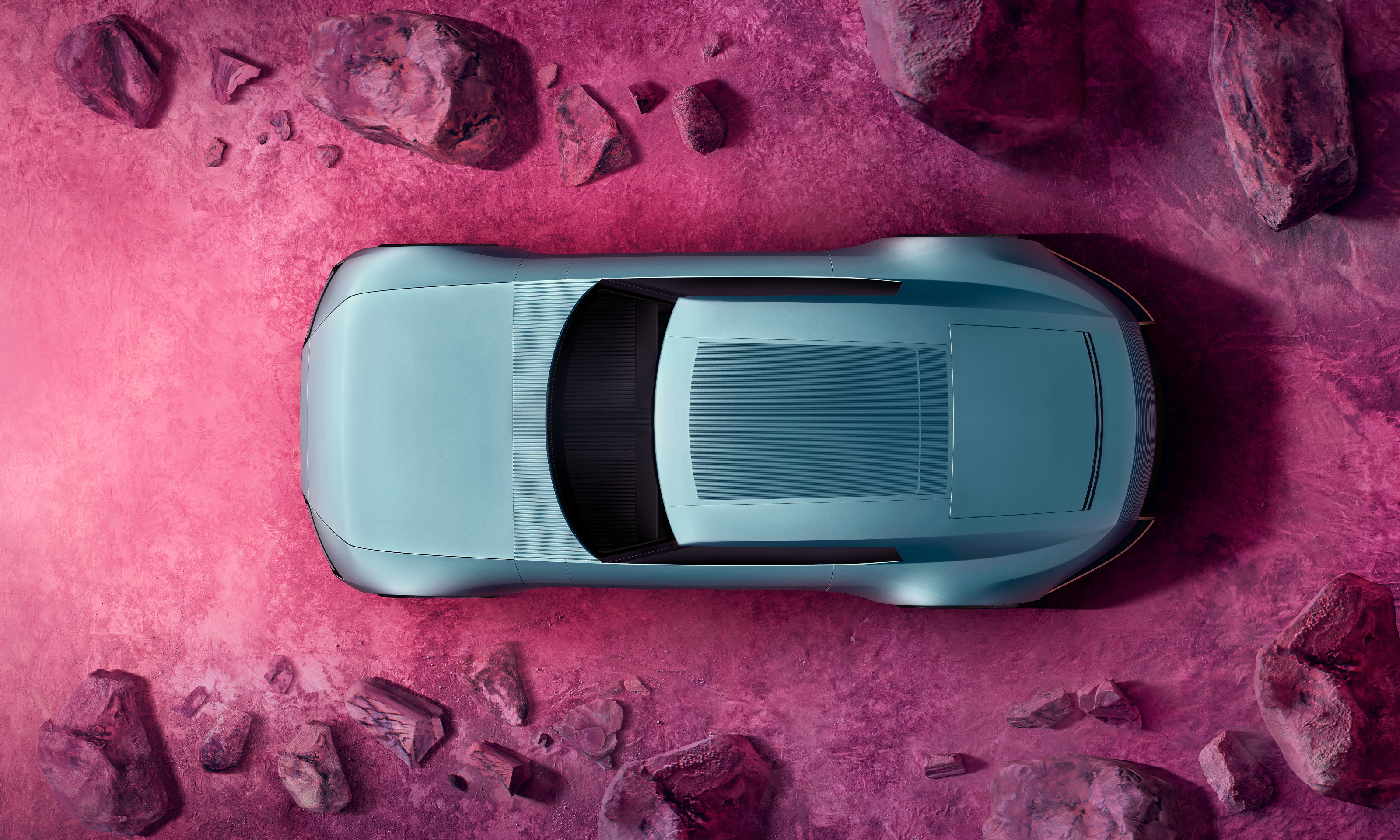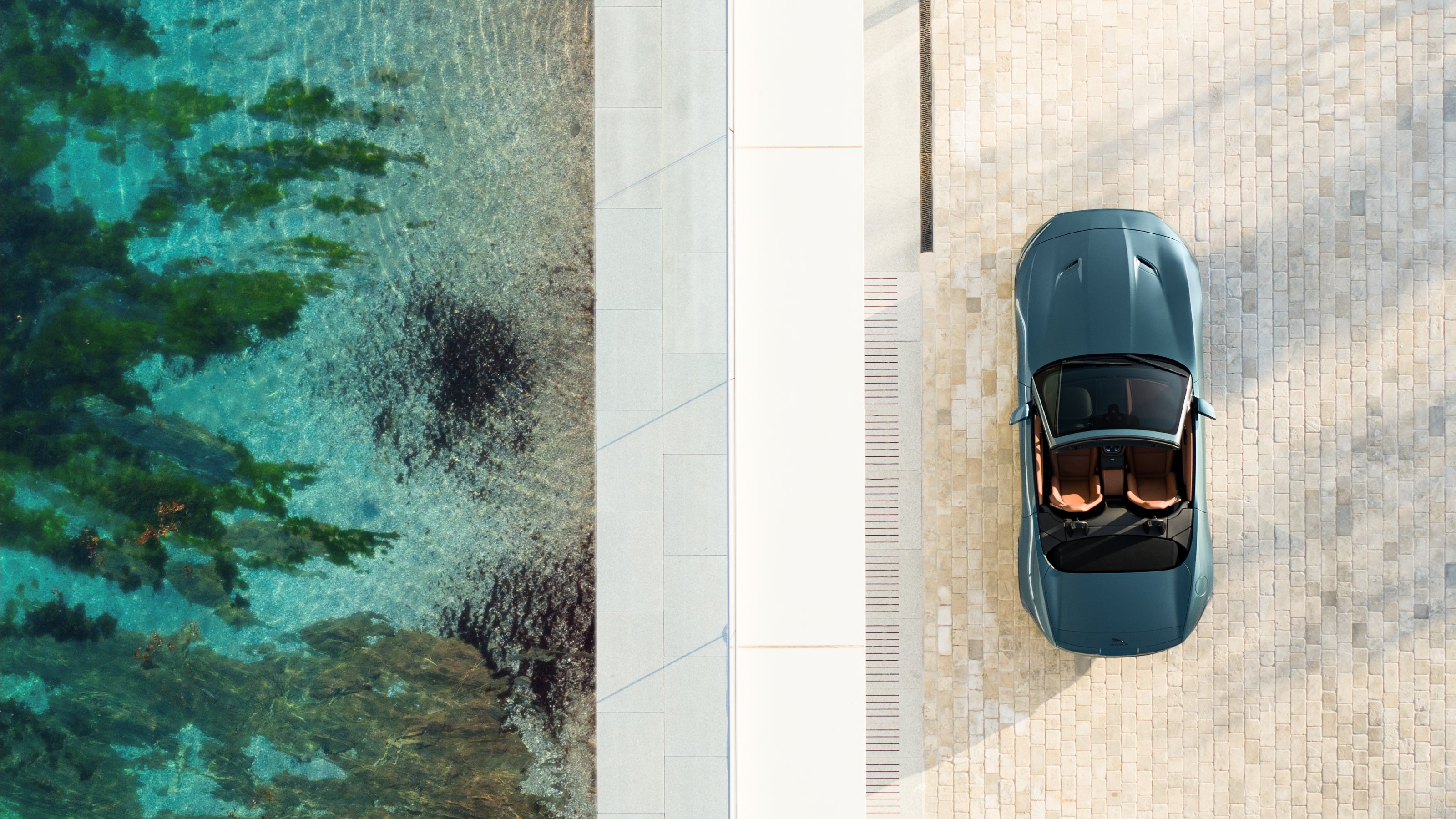I-Pace versus F-Type: the last of the Jaguar V8s?
New design leadership is aiming to engage the discerning EV buyer of today

It’s been 18 months since we last sampled the Jaguar I-Pace, in which time the British manufacturer’s big premium rivals, Mercedes and Audi, have both launched competing large scale EVs (the EQC and e-tron Sportback respectively) and BMW is not far off from joining the race. While Jaguar seems to be having something of an identity crisis of late, not helped by global economic woes, we’re here to reassure it that it did a very good thing with the original I-Pace and that this mildly revised and enhanced model simply confirms that first impression.
Set alongside its rivals, the I-Pace is svelte and elegant, lower and sleeker although still relatively large. What’s more, it feels lighter and more poised, emboldened by a crossover body style that is still unique in a field of chunky electric SUVs. Its closest competitor is probably Tesla’s Model X, a car which is probably more explicitly… electric than anything else on the market. By which we mean that Tesla answers to no-one in terms of brand or heritage or automotive convention. This is great, but it’s not for everyone; the Jag delivers just the right amount of future-facing confidence and innate design excellence for those not quite ready to leap into the unknown.
In the long-run, Tesla’s strategy might be the winning one, but let’s not write Jaguar off just yet. New design leadership – courtesy of closer involvement from Gerry McGovern (newly appointed to JLR’s management board) and design director Julian Thomson – aims to rediscover the brand’s elusive sweet spot. From an outsider’s point of view, the I-Pace seems to be the company’s best way of engaging with future car buyers, especially those who want EVs to represent a bold break from the past. That’s a fine line for a brand with such a weighty heritage. Jaguar has to look forwards while still being able to build precise replicas of its 1950s-era C-Type racing cars for discerning collectors. It’s a huge remit, and an expensive one.

The Jaguar I-Pace is a pure electric car with genuinely elegant lines
The I-Pace is one of the better electric cars to drive, with great balance and direct steering honed by decades of track experience. The face-lift updates the tech – always a crucial component of an EV – with a more comprehensive entertainment system, better connectivity to your own phone and neat new gadgets like the ClearSight digital rear-view mirror (although not so good for the spectacles wearer). The stubby bonnet and long body provides plenty of cabin space, with proportions that are neatly tailored to this relatively unconventional form.
The next all-electric Jag in the line-up was supposed to be a radical new version of the flagship XJ, the trad saloon that trod a conventional path for decades before being upended and re-imagined back in 2009 by Thomson’s predecessor Ian Callum. That XJ was a great car but not a commercial hit, especially in a slowly evaporating market sector, at least in Europe. The all-new XJ is expected to combine avant-garde looks with the undeniable lure of EV tech. However, electrification is a fast-moving business and those that committed early are already way, way downstream. The danger for every brand, not just Jaguar, is that they risk joining the race at a considerable disadvantage to the leaders, with only the strength of their brand to carry them along.

The I-Pace has a refined contemporary interior that’s not overly dependent on touch screen buttons
It also helps to have deep pockets, because the investment required is colossal, with no prospect of quick returns. Case in point, Porsche’s Taycan is rumoured to have cost over a billion dollars to bring to market, with some sources putting the cost of its dedicated new Zuffenhausen factory at $800m. The Taycan is an exceptional car, and a true Porsche, but in terms of raw numbers - and stats matter with EVs – it can’t beat the efficiency of a Tesla. Instead, it’s left to the considerable lustre and appeal of the Porsche badge to make it a contender. It is a very tall order to expect Jaguar to an XJ with similar appeal.
What of the rest of the Jaguar range? In the US, the company’s name was made by the sports cars of the 1950s, 60s and 70s, and the blinding halo of the legendary E-Type still casts a long shadow. Attempts to follow the E-Type never quite hit the same mark, and Jaguar’s subsequent coupé models became increasingly more focused on the GT market rather than purist sports car buyers. With the F-Type, originally launched in 2013, the sporting emphasis was back on. Now that car has been substantially overhauled and uprated for a new generation.

The Jaguar F-Type is a purist, traditional sports car
The new F-Type is available in two flavours, 4-cylinder petrol and V8 petrol. It is in many respects the antithesis to the I-Pace, in looks, packaging and ethos. The facelift loses a little of the purity of the original design (a problem the E-Type also suffered from over its long lifespan), but there’s no doubting the dynamic ability, especially in range-topping V8 form.
It’s a car designed to be seen and heard in, qualities it shares with practically every other dedicated sports car on the planet. The more rational minded might want to compare and contrast; for marginally more than the I-Pace, the F-Type accelerates to 60mph fractionally quicker (4.4 seconds versus 4.5 seconds). Take into account the thirst of that 5.0-litre engine and you’re not necessarily going to get much further than the I-Pace’s emissions-free range of between 253 and 292 miles. The sports machine’s 177mph top speed is largely academic and while you’ll find plenty of paeans to the evocative sound of eight cylinders necking shots of pure fossil fuel, this is a passion that’s very much on the wane. The silent, graceful power of the I-Pace delivers driving fun with very little downside.

The F-Type has a well-crafted, driver-focused cockpit
For the past few decades, the auto industry - especially in the premium sector - has traditionally traded on emotion, stirred up by marketing and design. EV naysayers will naturally point to the hassles of charging and the I-Pace’s apparently clinical absence of romance as strikes against the newer car. The electric car market is still dominated by ‘category killers’, models that tick so many boxes that logic trumps emotion every time. This is changing fast. Although the F-Type has heritage and beauty on its side, it’s a sinking flagship. Jaguar knows all too well that its next generation of sports cars must blend beauty with a very different kind of emotion if it wants to stay relevant.


Jaguar's F-Type is all about the romance of the open road. How much longer will conventional cars have the emotional edge over electric vehicles?
INFORMATION
Jaguar I-Pace HSE, from £74,395
Wallpaper* Newsletter
Receive our daily digest of inspiration, escapism and design stories from around the world direct to your inbox.
Jaguar F-Type Coupe First Edition, from £80,890
Jonathan Bell has written for Wallpaper* magazine since 1999, covering everything from architecture and transport design to books, tech and graphic design. He is now the magazine’s Transport and Technology Editor. Jonathan has written and edited 15 books, including Concept Car Design, 21st Century House, and The New Modern House. He is also the host of Wallpaper’s first podcast.
-
 Timeless yet daring, this Marylebone penthouse 'floats' on top of a grand London building
Timeless yet daring, this Marylebone penthouse 'floats' on top of a grand London buildingA Marylebone penthouse near Regent’s Park by design studio Wendover is transformed into a light-filled family home
-
 Lighter laptops with weightier AI: Microsoft Surface Laptop 13” and Surface Pro 12”
Lighter laptops with weightier AI: Microsoft Surface Laptop 13” and Surface Pro 12”The headline feature of the new Surface Laptop 13” and Surface Pro 12” from Microsoft is ultra-long battery life. What the company really wants you to do is spend more time conversing with Copilot
-
 Fear of God’s Jerry Lorenzo on curating the perfect Met Gala table: ‘They share my honesty’
Fear of God’s Jerry Lorenzo on curating the perfect Met Gala table: ‘They share my honesty’The LA-based founder of Fear of God takes Wallpaper* behind the scenes of his preparations for the Met Gala 2025, dressing guests who span the worlds of art, film and fashion, including Yara Shahidi, Ryan Coogler, Arthur Jafa and Andre Walker
-
 Jaguar’s big rethink earns its Type 00 concept car a Wallpaper* Design Award 2025
Jaguar’s big rethink earns its Type 00 concept car a Wallpaper* Design Award 2025We salute the forward-thinking and bold choices of the dramatic Jaguar Type 00 Concept, a preview of next year's all-new electric GT
-
 The top 10 concept cars of 2024, as selected by Wallpaper’s Transport Editor
The top 10 concept cars of 2024, as selected by Wallpaper’s Transport EditorWe round up our favourite forays into futuristic design with this collection of concepts and design studies showcasing the transport of tomorrow
-
 La Vie en Rose: can the Jaguar Type 00 reset the narrative surrounding the brand’s reinvention?
La Vie en Rose: can the Jaguar Type 00 reset the narrative surrounding the brand’s reinvention?This is the Jaguar Type 00, the first physical manifestation of the reborn brand’s new commitment to ‘Exuberant Modernism’. We take it for a semiotic spin
-
 Jaguar reveals its new graphic identity ahead of a long-awaited total brand reboot
Jaguar reveals its new graphic identity ahead of a long-awaited total brand rebootJaguar’s new ethos is Exuberant Modernism, encapsulated by a new visual language that draws on fine art, fashion and architecture
-
 Helm’s meticulously re-imagined Jaguar E-Type features a finely crafted interior by Bill Amberg
Helm’s meticulously re-imagined Jaguar E-Type features a finely crafted interior by Bill AmbergHelm transforms the legendary E-Type into a thoroughly modern machine, upgrading every aspect of Jaguar’s pioneering sports car to an exacting brief
-
 Zoute Grand Prix is a car fest like no other at a pristine Belgian beachside town
Zoute Grand Prix is a car fest like no other at a pristine Belgian beachside townAmy Serafin takes to the well-heeled streets of Knokke-Heist to experience the Zoute Grand Prix, its annual cavalcade of classic car-related events, from a rally to an auction
-
 Jaguar F-Type 75 special edition is the last of its kind as the marque hints at a radical future
Jaguar F-Type 75 special edition is the last of its kind as the marque hints at a radical futureThe Jaguar F-Type 75 will be the last ever V8-powered Jaguar; is it also the end of conventional sports cars for this legendary British marque?
-
 Peugeot’s sparky 308 gets hybrid power and handsome lines
Peugeot’s sparky 308 gets hybrid power and handsome linesThe Peugeot 308 proves that mass-market design needn’t be dull, blending hybrid power with sharp lines and excellent detailing